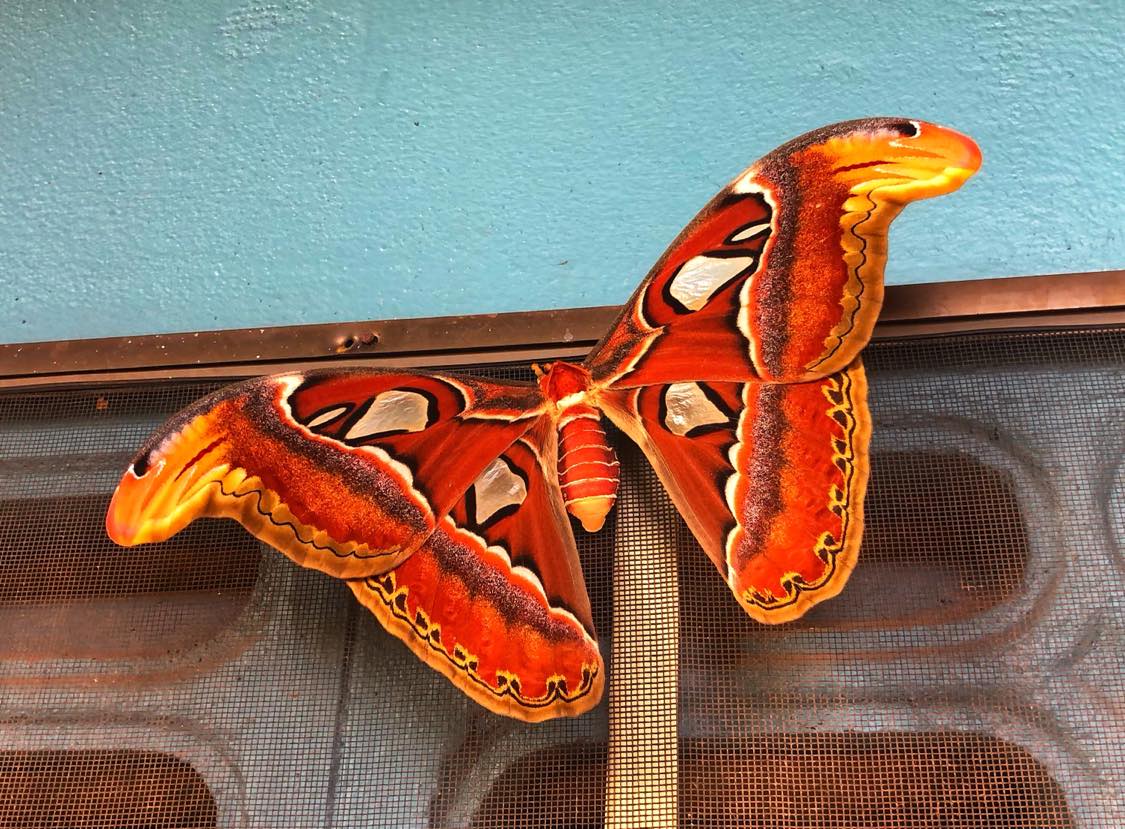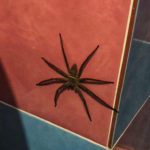
The Largest Moth (Butterfly) in Thailand

Sakon Nakhon not only is home to the biggest spider in Thailand (The Huntsman). The largest moth in Thailand (The Atlas Moth) also makes its home here. The Atlas Moth (มอดแอตลาส) is recognized as the largest moth in Thailand because it has a wingspan of up to about 12 inches or 30 centimeters.
The Atlas moth is named after the Titan Atlas from Greek mythology (the god who was said to hold up the heavens). Not only present in Thailand, the Atlas moth is also found in forests throughout Southeast Asia, as well as India. It has distinctive colorful wings with a pattern of eye-like circles that serve as a natural defense against predators. The tips of its wings also have an uncanny resemblance to the head of a cobra, which also wards off predators.
In addition to its impressive size and appearance, the Atlas moth has an interesting life cycle. The caterpillars of this species are large and colorful, with green bodies and spiky black and yellow spines. You occasionally might find these caterpillars crawling around your patio in Sakon Nakhon. They feed on a variety of tree species and can grow up to 11 centimeters in length.
When it is ready to pupate, the Atlas moth caterpillar spins a cocoon that is sometimes used in Thailand’s silk industry. Atlas silk sheds in broken strands. Therefore it has been less desirable than other silk. However, there is ongoing research on whether Atlas moth silk can be used as a substitute for regular silk. The heavier cocoon quality and unique properties of the fibers show promise, as studies have shown the Atlas moth’s silk threads had about 80% higher cell density and growth compared to that of the Thai silk moth. One day silk produced by the Atlas moth may become a viable alternative to conventional silk.
While moths are not technically butterflies, the Atlas moth is often commonly referred to as the largest butterfly in Thailand, because most Thais don’t make a distinction between moths and butterflies. If you happen to see an Atlas Moth during the day and would like to get a picture, it is unlikely that you will scare it away by getting close. Atlas Moths are very lethargic during the day, as they are resting from their night flights. You therefore usually can get within inches of them to take a photo.
- Learn Chinese in Thailand – University Programs - December 17, 2024
- Sunflower Fields in Thailand - December 7, 2024
- Air India to Thailand Review – Layovers, Service & Concerns - November 13, 2024



